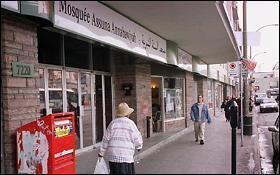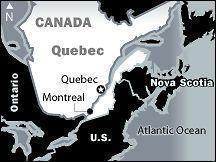 |
 |
|
|||||||
Joining Jihad
Most were disaffected young men, Algerians who spent their days playing soccer, smoking cigarettes and decrying the corrupt culture of their new country while simultaneously exploiting its generous immigration and welfare laws.
Pushing his way to the center of the circle, though, was an older man in his mid-40s, one who held court for hours, regaling the group with stories and jokes. Abderraouf Hannachi was like a jolly uncle — except when he talked about his hatred for the West and, in particular, for the United States: The American infidels and their culture — immoral dress and music, godless pursuit of wealth — must be stopped. You can help. You can, as I have, join the holy war.
Hannachi was a regular presence at a mosque called Assuna Annabawiyah, a nondescript storefront with a faded yellow plastic sign. Three doors down, the neighborhood McDonald's was crowded with Middle Eastern and North African immigrants drinking coffee and eating Big Macs. While the physical setting of the Assuna mosque was unimpressive, it was a community magnet. On Fridays, it attracted about 1,500 worshippers, most of them Algerians. Even between prayers and services, the mosque was busy. Children played in its well-worn hallways. Young men congregated in its bookstore, which sold tapes imploring them to join the global jihad.
In one such tape, Sheik Abu Abdul Aziz — a leader of jihad in Bosnia and Kashmir — gives his recruitment message:
One thing Ressam noticed about Hannachi, the recruiter, and Fateh Kamel, another friend who had fought jihad, was their status among Montreal's Arabic extremists. In those circles, they were men of respect, addressed as "important brothers." Such status appealed to Ressam and his friends. Soon, in smoke-filled sessions at their apartment at 6301 Place de la Malicorne, they were planning their own jihad excursions. What they didn't know was that Canadian intelligence agents were listening to their every word. A few months earlier, the Canadian Security Intelligence Service (CSIS) had heard from Jean-Louis Bruguière, France's top terrorism sleuth, that he believed terrorists had formed a "cell" in Montreal. In particular, Bruguière told CSIS, watch for a man named Fateh Kamel. At first, CSIS ignored the tip from Bruguière, who was seen by some in intelligence circles as an alarmist. But after Italian agents issued a similar warning, the Canadians began monitoring the Malicorne apartment and snapping photographs of Ressam, Kamel and others. CSIS agents quickly learned of Ressam's frauds and thefts. They also knew Ressam and others were wanted on immigration warrants. But they could barely bring themselves to call Ressam and the Malicorne denizens a "cell." That sort of hyperbole was for Bruguière, who referred to the address as the "appartement de conspiracie." The Canadians instead gave the men at the apartment a derisive nickname, the "BOG" — short for "Bunch of Guys." To CSIS, they seemed more pathetic than dangerous — unemployed, no girlfriends, living on welfare and thievery, crammed into a flat reeking of cigarette smoke. When they were overheard recruiting, plotting and spewing anti-Western vitriol, the agents found it nearly comical. An official would later refer to the sessions as "terrorist Tupperware parties." Back at Canadian intelligence headquarters, CSIS Deputy Director for Operations Jim Corcoran would read summaries of the intercepted conversations. "Some of these guys were killers," Corcoran said. The others "sat at their feet, enthralled. There were bragging rights. There was a certain cachet to it all." Eventually, CSIS built a 400-page file on the men who came and went from the apartment. Some were identified as worth continuing to watch. The thief Ressam, though, was seen as the least likely to pose a serious threat. The intelligence agency did little with the dossier, not even sharing it with Montreal police or immigration officials. Much like the CIA in the United States, CSIS was restricted to gathering foreign intelligence and protecting security. Its mission did not include chasing down ragtag thieves and immigration violators. So the "bunch of guys" went undisturbed, even as they continued to plot their part of the holy war against the West. What CSIS apparently didn't know was this: Hannachi was a successful recruiter for bin Laden's al-Qaida. He worked closely with Abu Zubaydah, gatekeeper to bin Laden's training camps, the man who coordinated the entry of recruits to Afghanistan. And the Canadian agents underestimated how deeply Ressam was already involved with terrorists by mid-1996, providing stolen and counterfeit passports. In late 1996, Hannachi called Zubaydah in Afghanistan and told him he had a good recruit, an Algerian named Ahmed Ressam. They made arrangements for Ressam to travel to a training camp.
The quiet thief who loved discos and designer clothes was on his way to jihad.
|
|
|||||||||||||||||||||||||||||||||||||||||||||||||||||||||||||||||||||||||||||||||||||||||||
|
The Terrorist Within | Reprints seattletimes.com home |

